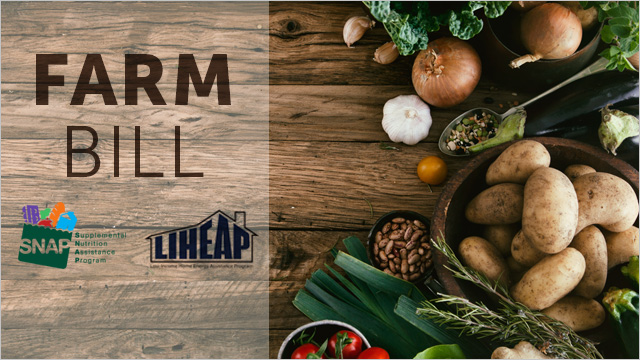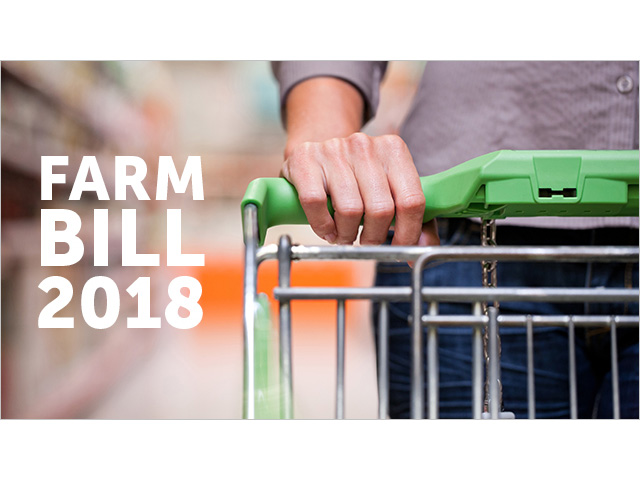Between 800,000 and 1.1 million households receiving Supplemental Nutrition Assistance Program (SNAP) benefits in 2017 would experience a $50 to $75 cut in their monthly benefit under certain provisions of the House farm bill (H.R.2, The Agriculture Improvement Act of 2018), according to a microsimulation conducted by Mathematica Policy Research. Although the provisions would reduce benefits substantially for 3 to 5 percent of SNAP households, the provisions would increase benefits by a modest amount—an average of $10—for about 20 percent of SNAP households, or about four million households.
Those findings are part of an analysis, funded by the Robert Wood Johnson Foundation, that estimates effects of changing how public agencies take into account utility expenses and earnings when calculating SNAP benefits.
Among households that would have their benefits reduced under these provisions, 79 to 84 percent (700,000 to 900,000 households) include children and 76 to 80 percent (600,000 to 900,000 households) live in poverty. If only the provision involving utility expenses was enacted, the percentage of those households living in poverty—when considering income plus SNAP benefits—would increase from 65 percent to between 68 and 71 percent.
“SNAP has a long and successful history of providing temporary help to reduce food insecurity, lift people out of poverty, help families achieve self-sufficiency and reduce health disparities,” said Giridhar Mallya, senior program officer, Robert Wood Johnson Foundation. “Any reforms to SNAP should be driven by analysis of impacts on access, equity, cost and program outcomes including food security, financial security and diet quality.”
Specifically, the analysis examined changes to the following:
- Heating and cooling standard utility allowance requirements. Under current law, SNAP households with high housing expenses relative to their income are entitled to an income deduction based, in part, on rent (or mortgage) and utilities costs. States may use a standard utility allowance (SUA) to streamline the process, including the highest SUA—the heating and cooling SUA (HCSUA)—to calculate a household’s deduction if the household receives energy assistance, even if the household does not have heating and cooling utility costs. H.R. 2 continues to permit this practice for households that include a senior or a person with a disability but not for other households.
- Earnings deductions. Under current law, working households may deduct a portion of their earnings from their income to receive a higher SNAP benefit. H.R. 2 would increase the earnings deduction from 20 percent of earned income to 22 percent.
The analysis also assesses the separate effects of each provision with an example of a typical three-person household with a child that received $346 in monthly SNAP benefits in 2017. Under the increase in the earnings deduction only, the household’s monthly SNAP benefit would climb to $357, an increase of 3.2 percent. By contrast, under the more restrictive energy assistance rules, the household’s monthly SNAP benefit would drop to between $197 to $246, a decline of between 29 percent to 43 percent.
“The value of this analysis is that we can estimate the potential effects of each provision—separately or in combination—on the number of SNAP households as well as their benefit levels,” said Mathematica Senior Researcher Karen Cunnyngham. “We hope these new data will help inform the public and policymakers on potential changes to the farm bill.”
The analysis is the second in a series of briefs examining the impact of proposed changes to SNAP under H.R. 2. The first brief, released in September, found that about one in 11 households receiving SNAP benefits—or 2 million households participating in fiscal year 2015—would lose eligibility because of changes to countable resources and the elimination of broad-based categorical eligibility, and an estimated 283,000 households would gain eligibility and choose to participate in SNAP.
Mathematica Media Contact:
J.B. Wogan
E: jwogan@mathematica-mpr.com
P: 202-838-3618
Robert Wood Johnson Foundation Media Contact:
Adam Zimmerman
E:azimmerman@burness.com
P: 301-280-5710


